Compact Internally Matched High-Power Power Amplifier with a Wide Frequency Band of 0.8–2 GHz
Abstract
:1. Introduction
2. Design of Proposed Compact Wide-Band PA
2.1. Overall Design
2.2. Impedance Choosing
2.3. Input Matching Network Design
2.4. Out-Matching Network Design
2.5. Analysis of Wire-Spiral Inductor
2.6. Design of Power Divider/Combiner
3. Results and Discussion
3.1. Small Signal Test
3.2. Large Signal Test
4. Conclusions
Author Contributions
Funding
Data Availability Statement
Conflicts of Interest
References
- Spezio, A.E. Electronic warfare systems. IEEE Trans. Microw. Theory Tech. 2002, 50, 633–644. [Google Scholar] [CrossRef]
- Campbell, C.; Lee, C.; Williams, V.; Kao, M.Y.; Tserng, H.Q.; Saunier, P.; Balisteri, T. A Wideband Power Amplifier MMIC Utilizing GaN on SiC HEMT Technology. IEEE J. Solid-State Circuits 2009, 44, 2640–2647. [Google Scholar] [CrossRef]
- Yoshioka, T.; Harauchi, K.; Sugitani, T.; Maehara, H.; Yamasaki, T.; Ichinohe, H.; Miyashita, M.; Yamamoto, K.; Goto, S. Ku-Band 70-/30-W-Class Internally Matched GaN Power Amplifiers with Low IMD3 over a Wide Offset Frequency Range of up to 400 MHz. IEEE J. Solid-State Circuits 2021, 56, 2635–2646. [Google Scholar] [CrossRef]
- Jeong, J.; Pech, P.; Jeong, Y.; Lee, S. Wafer-Level-Packaged X -Band Internally Matched Power Amplifier Using Silicon Interposer Technology. IEEE Microw. Wirel. Compon. Lett. 2019, 29, 665–668. [Google Scholar] [CrossRef]
- Ayasli, Y.; Reynolds, L.D.; Mozzi, R.L.; Hanes, L.K. 2–20 GHz GaAs traveling-wave power amplifier. IEEE Trans. Microw. Theory Tech. 1984, 32, 290–295. [Google Scholar] [CrossRef]
- Hu, J.; Ma, K. A 0.1–52-GHz triple cascode amplifier with resistive feedback. IEEE Microw. Wirel. Compon. Lett. 2019, 29, 538–540. [Google Scholar] [CrossRef]
- Niclas, K.B. Multi-Octave Performance of Single-Ended Microwave Solid-State Amplifiers. IEEE Trans. Microw. Theory Tech. 2008, 32, 896–908. [Google Scholar] [CrossRef]
- Sayed, A.; Boeck, G. 5W highly linear GaN power amplifier with 3.4GHz bandwidth. In Proceedings of the 2007 European Microwave Conference, Munich, Germany, 9–12 October 2007; pp. 1429–1432. [Google Scholar]
- Le, Q.H.; Zimmer, G. Wideband High Efficiency 50 W GaN-HEMT Balanced Power Amplifier. In Proceedings of the 2018 48th European Microwave Conference (EuMC), Madrid, Spain, 23–27 September 2018; pp. 348–351. [Google Scholar]
- Srinidhi, E.R.; Masood, M.; Sharma, T.; Staudinger, J.; Dhar, S.K.; Rashev, P.; Tucker, G.; Ghannouchi, F.M. Digitally Assisted Load Modulated Balanced Amplifier for 200W Cellular Infrastructure Applications. In Proceedings of the 2020 IEEE/MTT-S International Microwave Symposium (IMS), Los Angeles, CA, USA, 4–6 August 2020; pp. 719–722. [Google Scholar]
- Samis, S.; Friesicke, C.; Maier, T.; Quay, R.; Jacob, A.F. A 41.5 dBm Broadband AlGaN/GaN HEMT Balanced Power Amplifier at K-Band. In Proceedings of the 2021 16th European Microwave Integrated Circuits Conference (EuMIC), London, UK, 3–4 April 2022; pp. 164–167. [Google Scholar]
- Chen, K.; Peroulis, D. Design of highly efficient broadband classE power amplifier using synthesized low-pass matching networks. IEEE Trans. Microw. Theory Tech. 2011, 59, 3162–3173. [Google Scholar] [CrossRef]
- Zheng, S.Y.; Liu, Z.W.; Zhang, X.Y.; Zhou, X.Y.; Chan, W.S. Design of Ultrawideband High-Efficiency Extended Continuous Class-F Power Amplifier. IEEE Trans. Ind. Electron. 2018, 65, 4661–4669. [Google Scholar] [CrossRef]
- Yang, M.; Xia, J.; Guo, Y.; Zhu, A. Highly Efficient Broadband Continuous Inverse Class-F Power Amplifier Design Using Modified Elliptic Low-Pass Filtering Matching Network. IEEE Trans. Microw. Theory Tech. 2016, 64, 1515–1525. [Google Scholar] [CrossRef]
- Trenz, F.; Hofmann, M.; Weigel, R.; Fischer, G.; Kissinger, D. Compact 2–28 GHz planar multi-octave bandwidth Wilkinson power dividers. In Proceedings of the 2014 IEEE MTT-S International Microwave Symposium (IMS2014), Tampa, FL, USA, 1–6 June 2014; pp. 1–4. [Google Scholar]
- Chi, P.-L.; Yang, T. A 1.3–2.08 GHz Filtering Power Divider with Bandwidth Control and High In-Band Isolation. IEEE Microw. Wirel. Compon. Lett. 2016, 26, 407–409. [Google Scholar] [CrossRef]
- Zhang, Z.; Arnous, M.T.; Boeck, G. Ultra-broadband GaN power amplifier utilizing planar Guanella transformer. In Proceedings of the 2015 17th International Conference on Transparent Optical Networks (ICTON), Budapest, Hungary, 5–9 July 2015; pp. 1–4. [Google Scholar]
- Arnous, M.T.; Zhang, Z.; Barbin, S.E.; Boeck, G. A novel design approach for highly efficient multioctave bandwidth GaN power amplifiers. IEEE Microw. Wirel. Compon. Lett. 2017, 27, 371–373. [Google Scholar] [CrossRef]
- Zhang, Z.; Cheng, Z.; Ke, H.; Liu, G.; Li, S. Design of a broadband high-efficiency hybrid class-EFJ power amplifier. IEEE Microw. Wirel. Compon. Lett. 2020, 30, 407–409. [Google Scholar] [CrossRef]
- Bidgoli, H.A.; Khodaei, M.; Tayarani, M. Multioctave Power Amplifier Design Using 9:1 Planar Impedance Transformer. IEEE Microw. Wirel. Compon. Lett. 2021, 31, 45–48. [Google Scholar] [CrossRef]
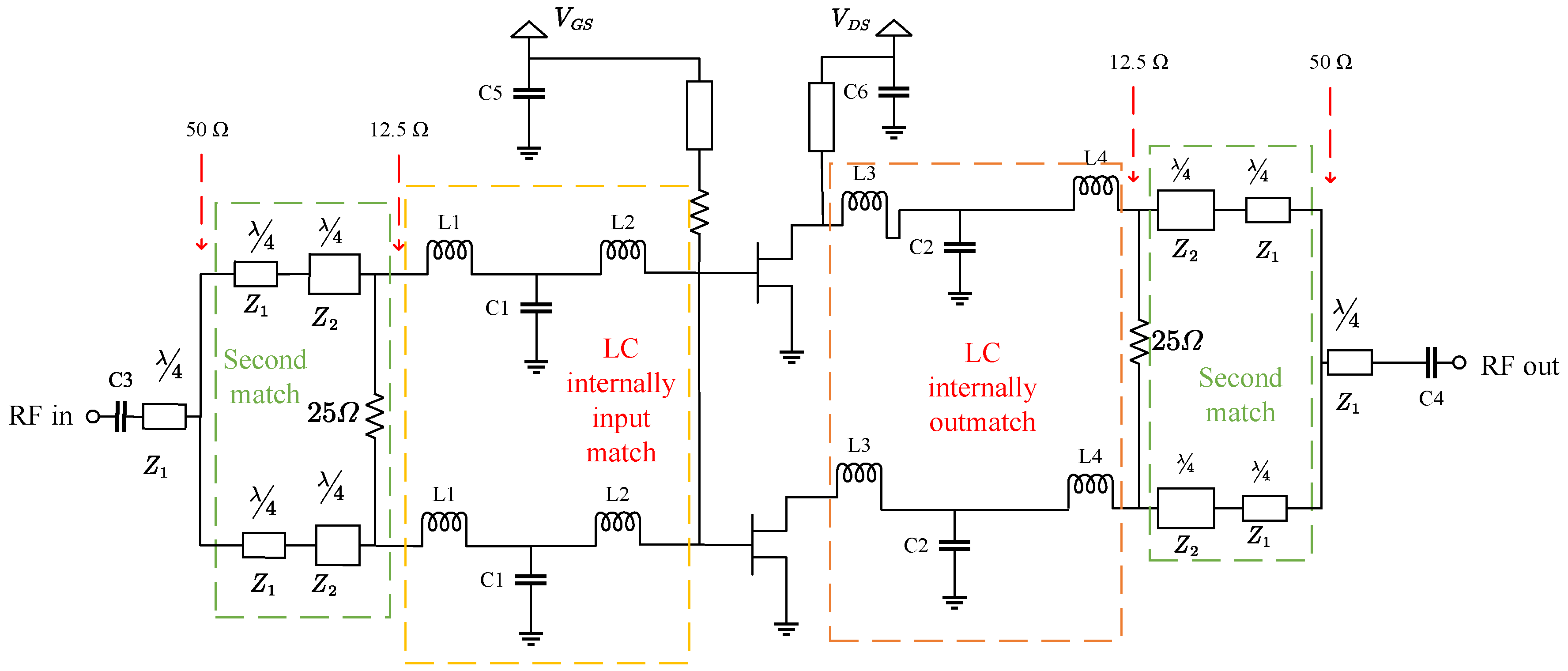


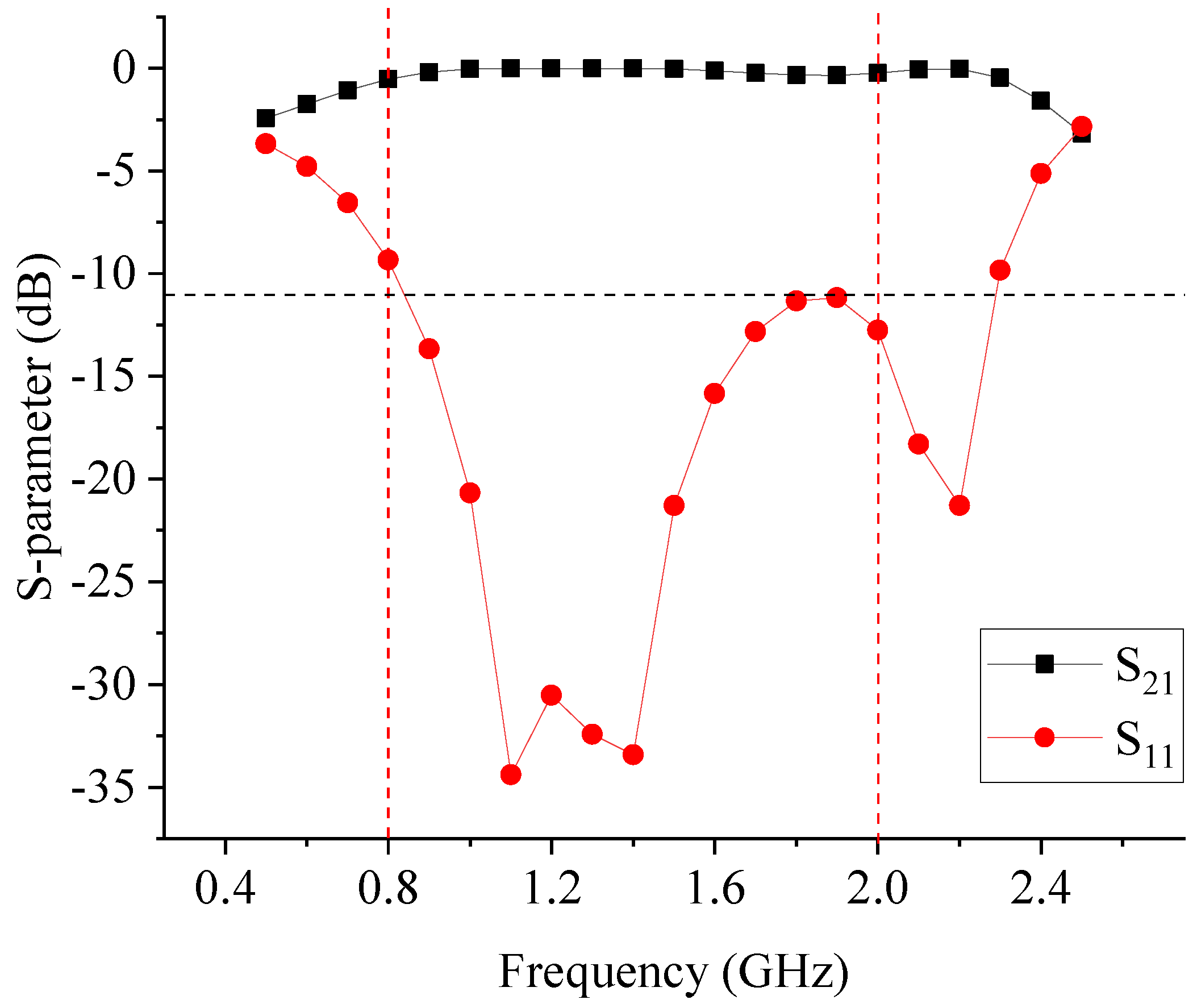
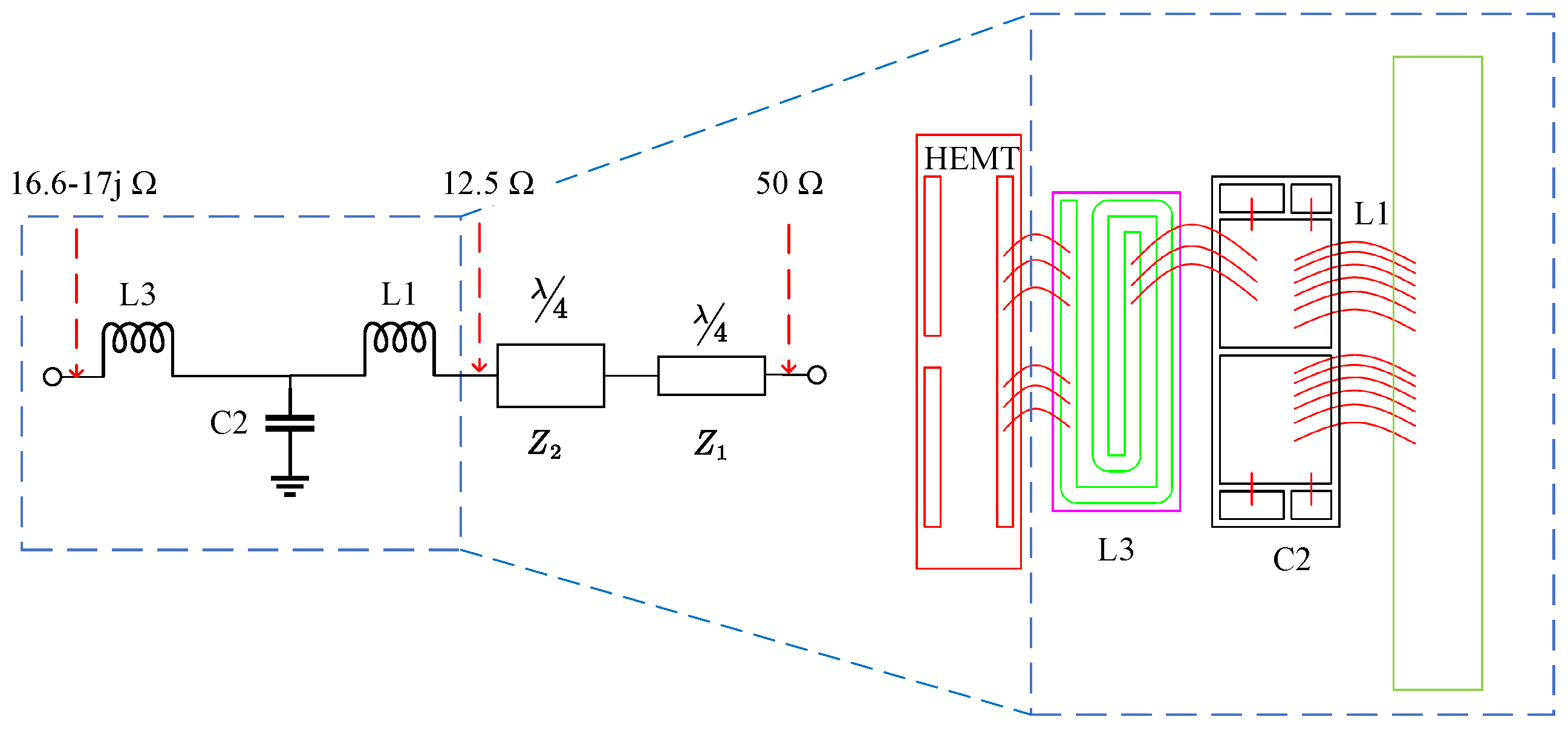
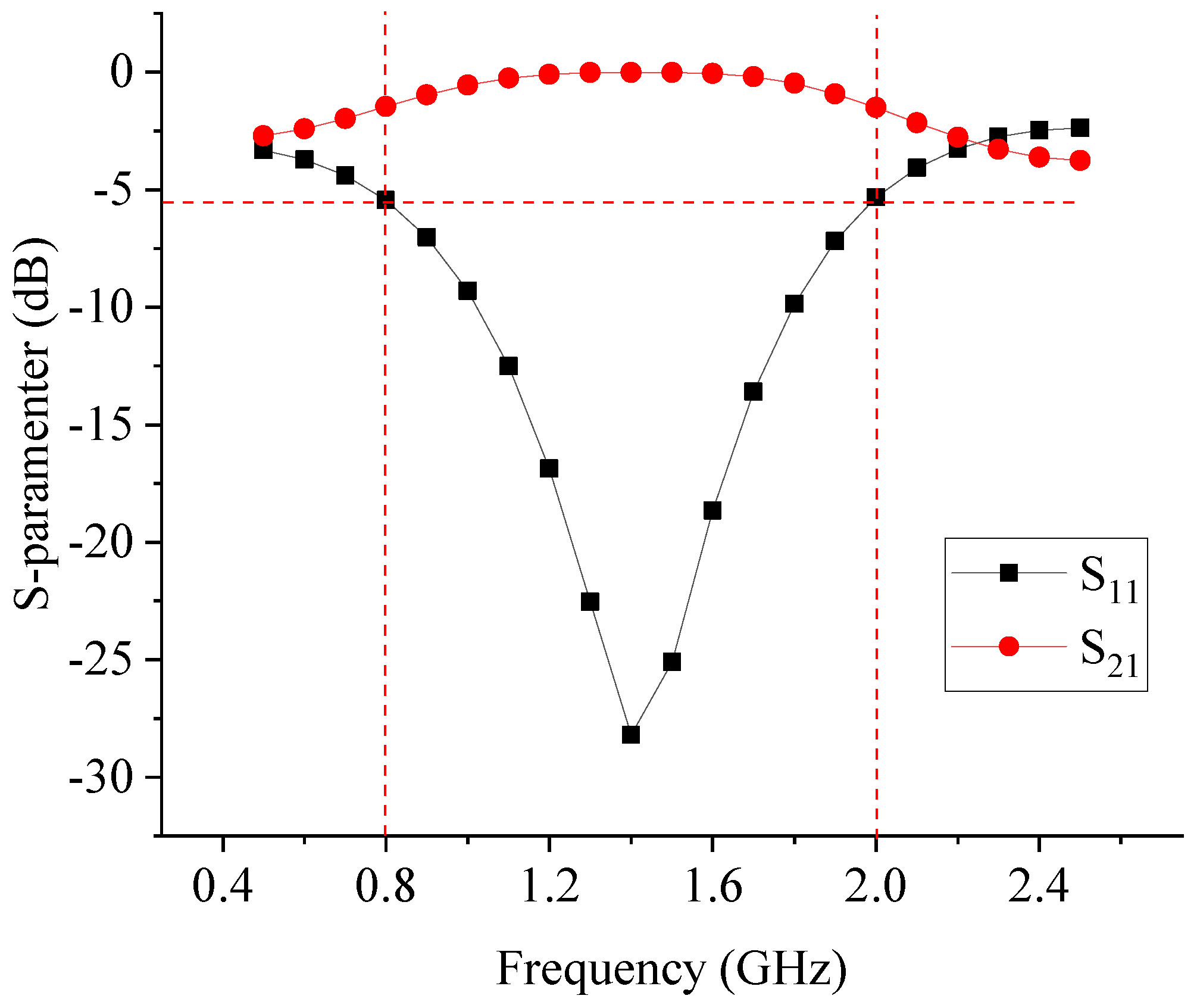
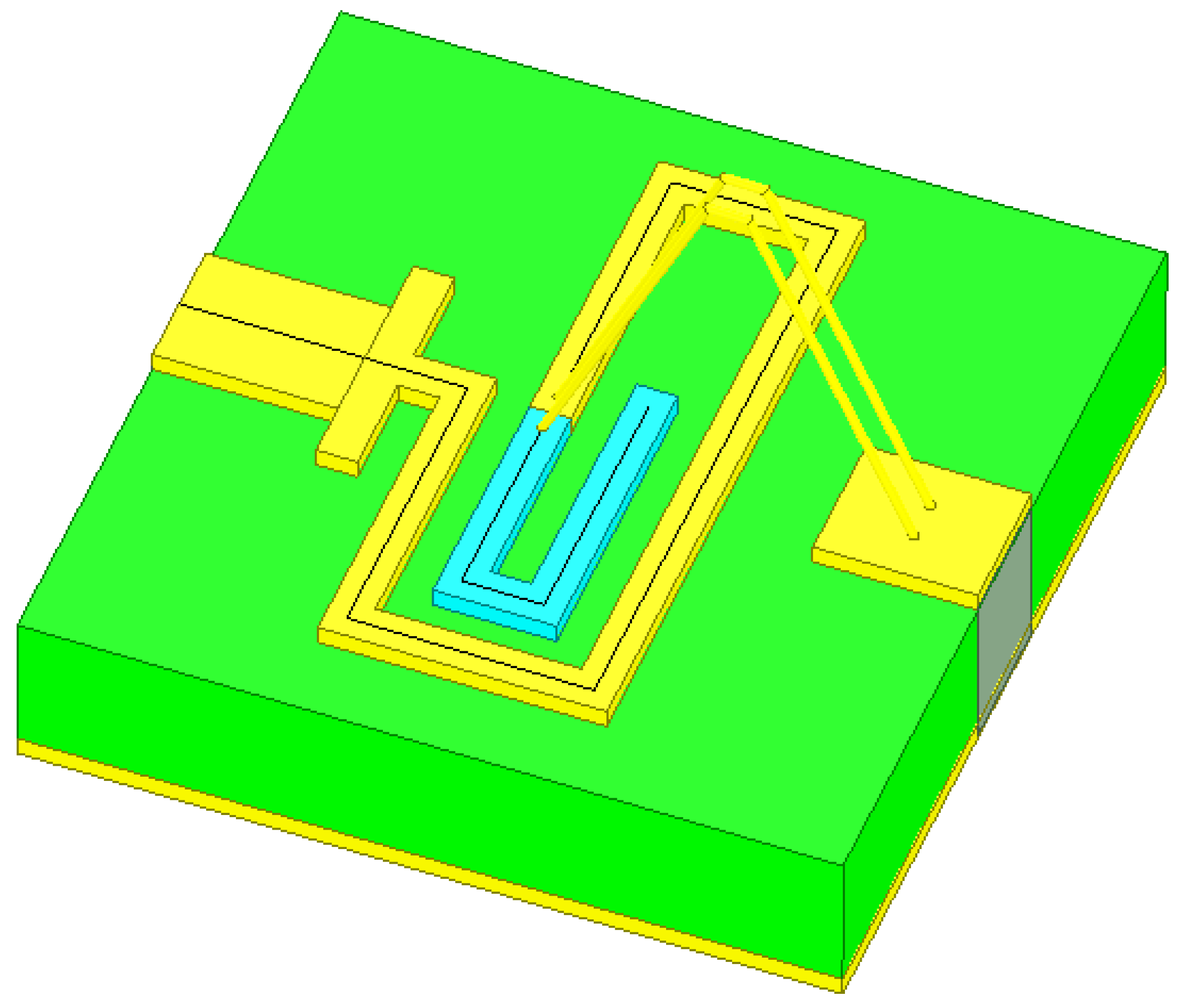

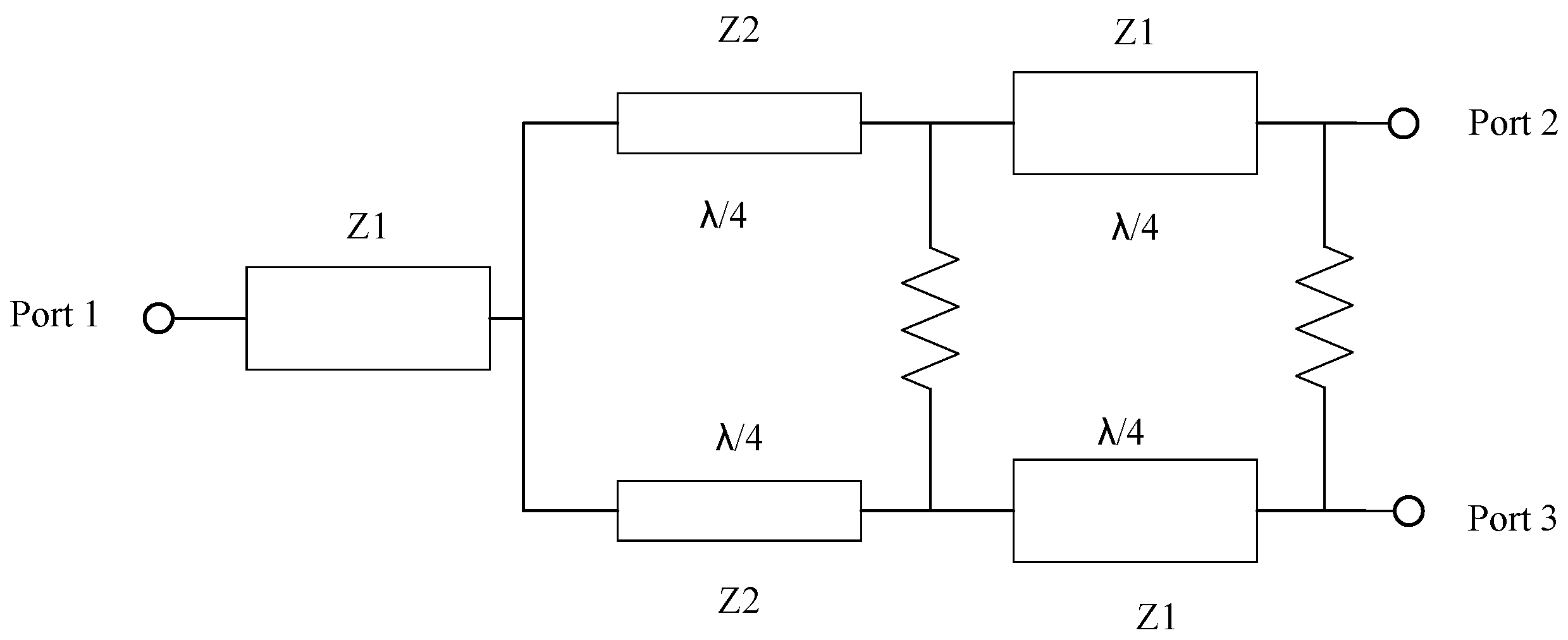
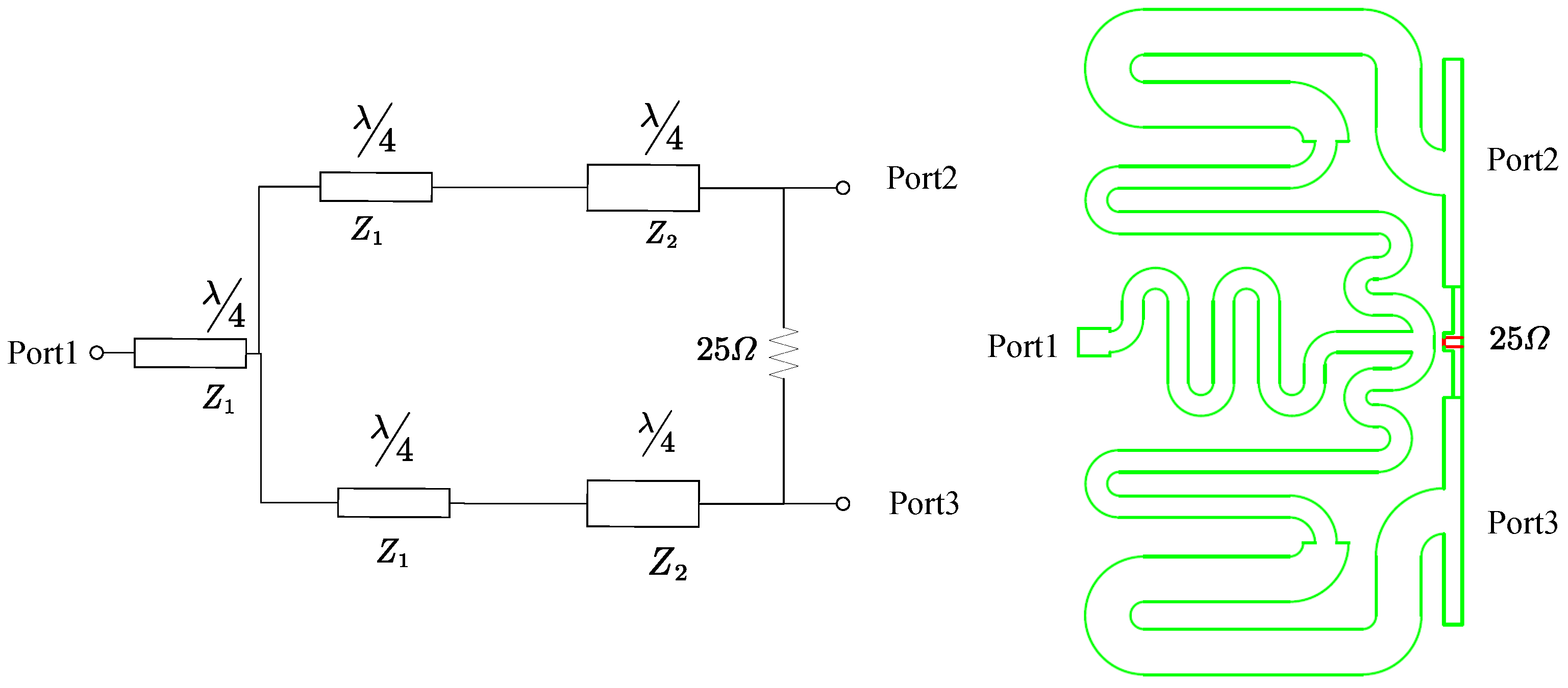

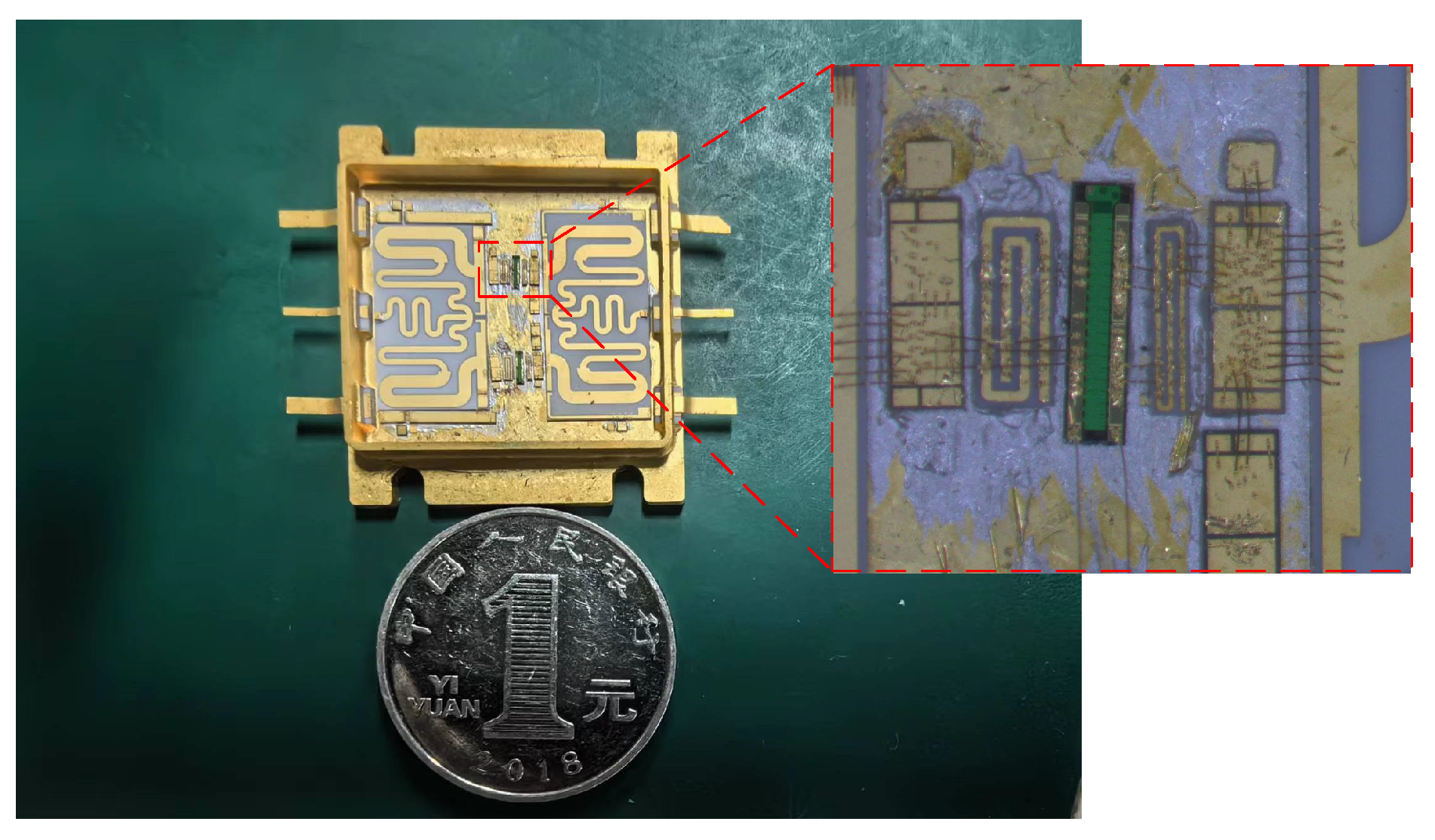
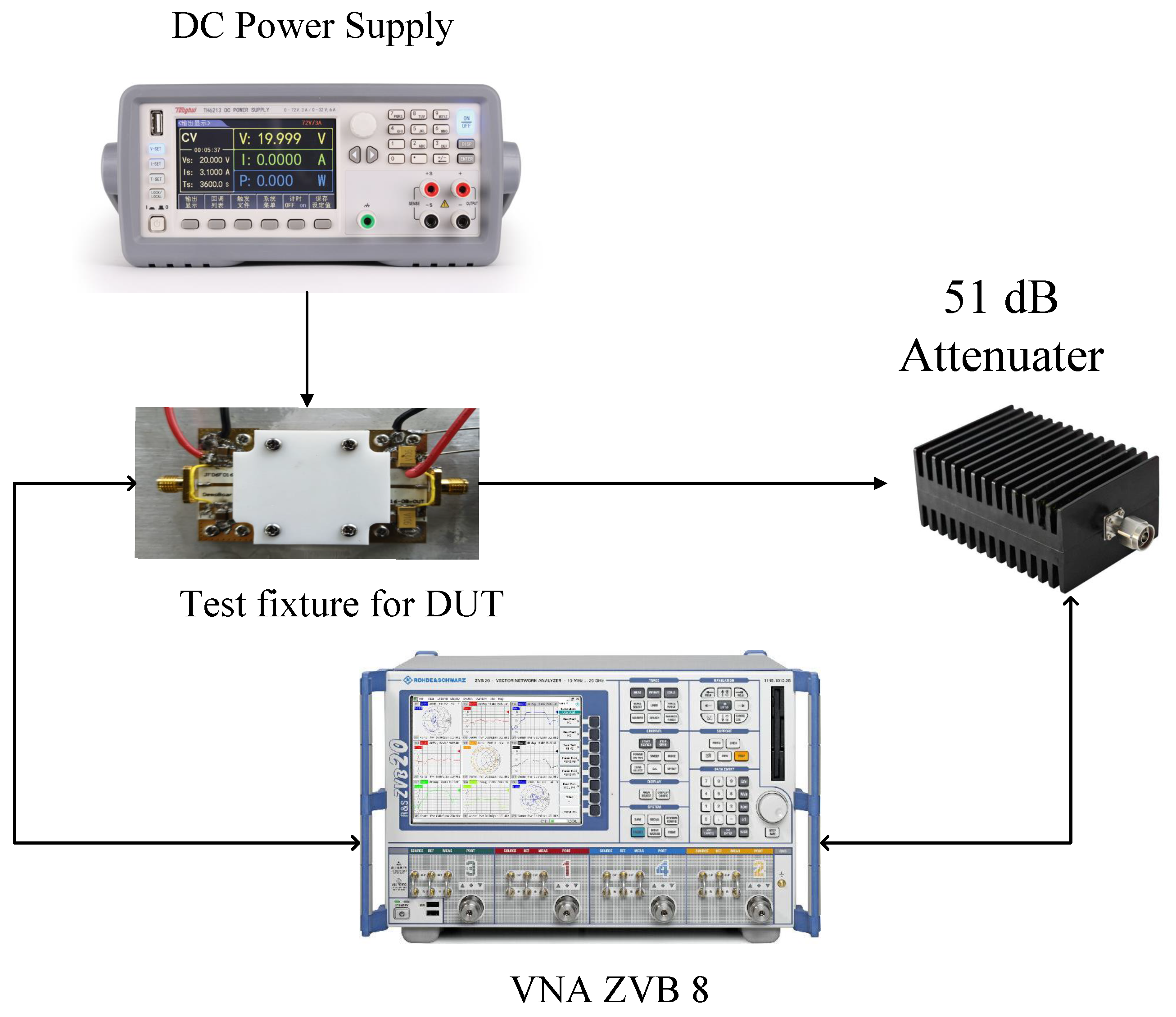
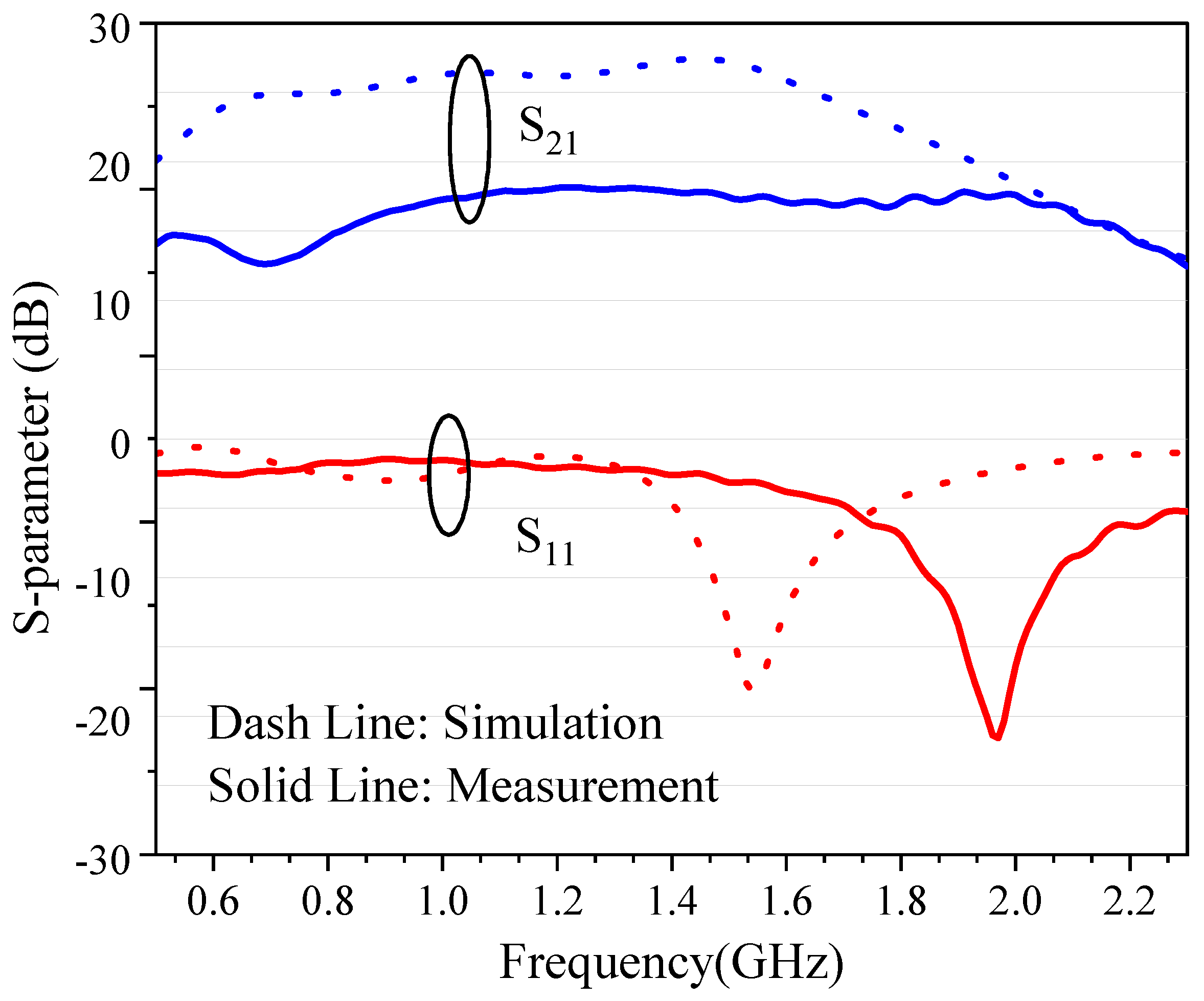
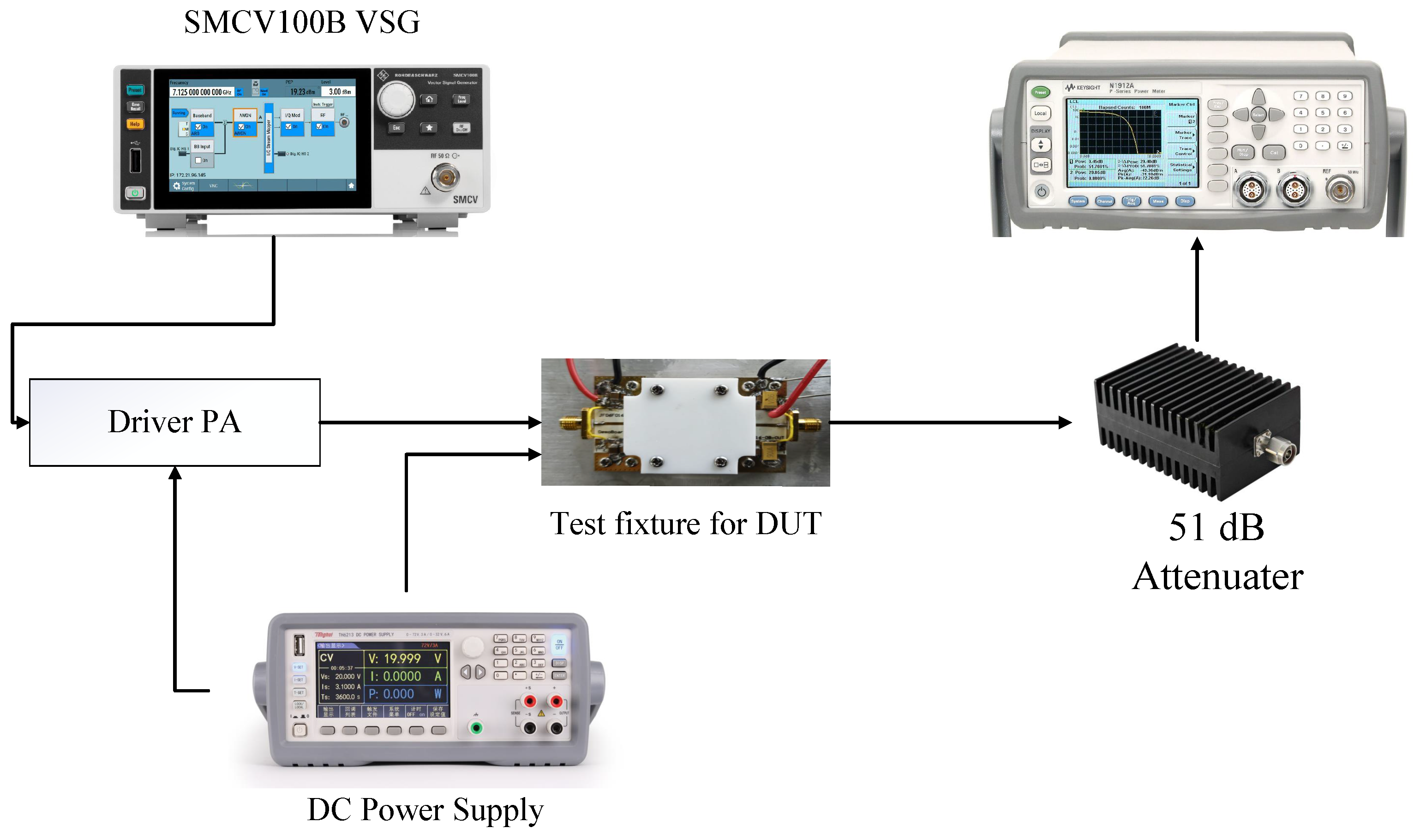
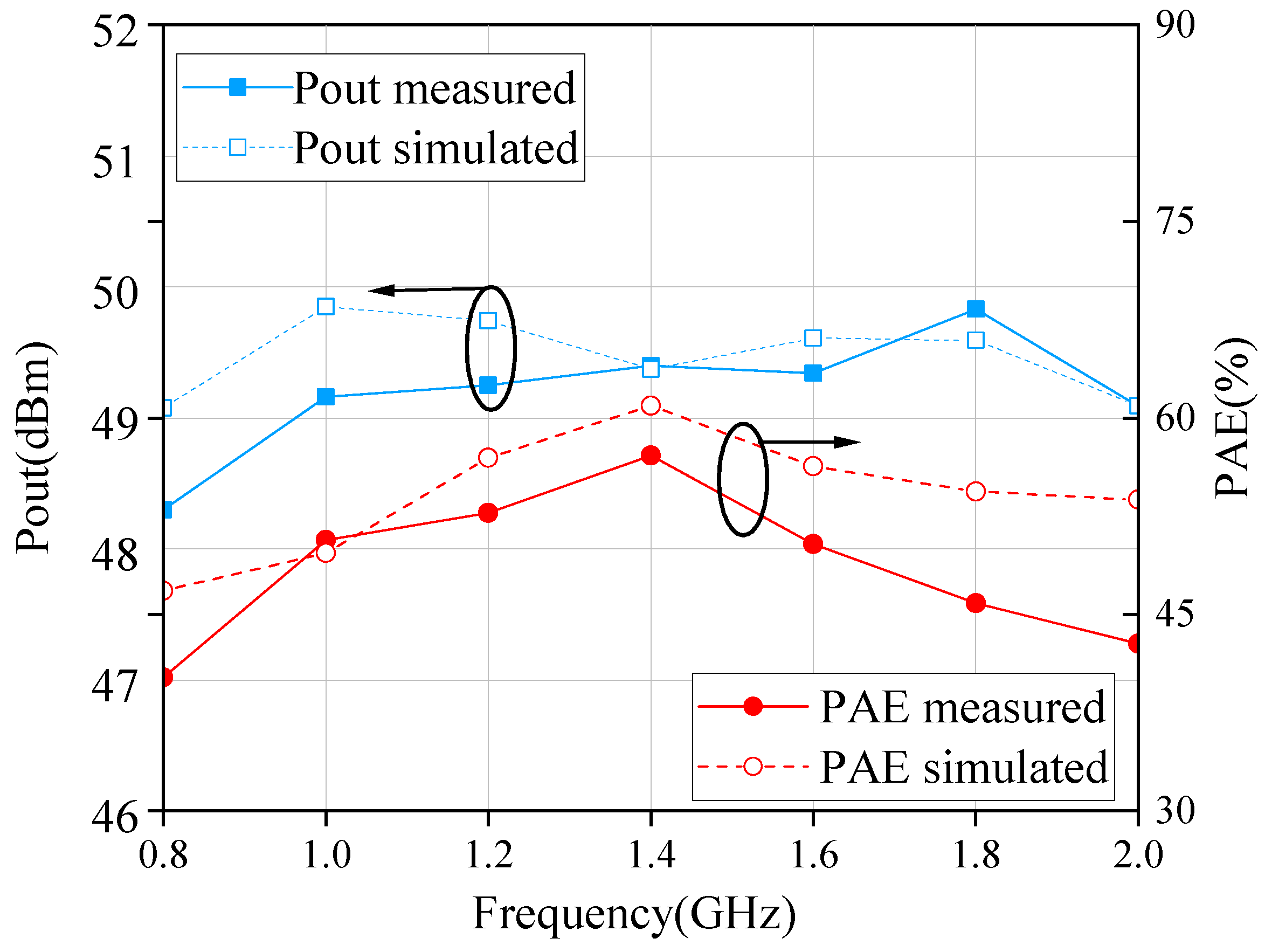
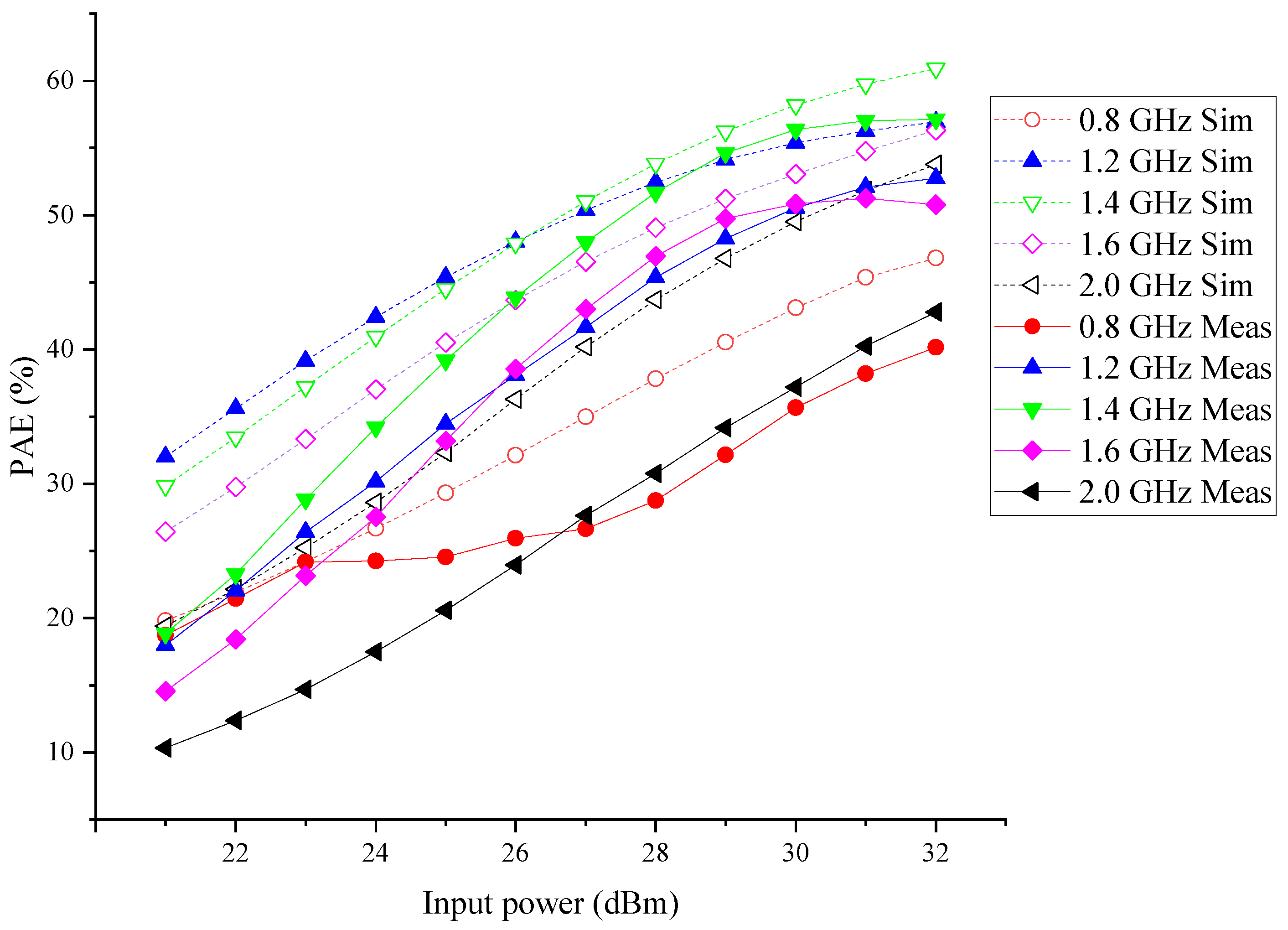

| Reference | Freq (GHz) | Pout (dBm) | Gain (dB) | PAE (%) | Size | |
|---|---|---|---|---|---|---|
| 2015 [17] | 0.4–2.8 | 42–43.7 | 9 | 45 | NA | NA |
| 2017 [18] | 0.5–2.7 | 43–45.4 | 8–10.4 | 56–70 | 0.6304 | |
| 2018 [13] | 0.5–2.3 | 39.2–41.2 | 11.7–25.3 | 52.7–80.7 | 0.2434 | |
| 2020 [19] | 1.2–3.6 | 39.59–43.1 | 10–14 | 57.6–67.2 | NA | NA |
| 2021 [20] | 0.5–3.0 | 46–47.5 | 10–11.5 | 50–60 | 1.5281 | |
| This work | 0.8–2 | 48.3–49.8 | 16.3–17.8 | 40.17–57.1 | 11.3162 |
Disclaimer/Publisher’s Note: The statements, opinions and data contained in all publications are solely those of the individual author(s) and contributor(s) and not of MDPI and/or the editor(s). MDPI and/or the editor(s) disclaim responsibility for any injury to people or property resulting from any ideas, methods, instructions or products referred to in the content. |
© 2024 by the authors. Licensee MDPI, Basel, Switzerland. This article is an open access article distributed under the terms and conditions of the Creative Commons Attribution (CC BY) license (https://creativecommons.org/licenses/by/4.0/).
Share and Cite
Li, C.; Zhang, Z.; Su, X.; Li, Y.; Liang, X.; Pei, Y.; Chen, C.; Xu, Y. Compact Internally Matched High-Power Power Amplifier with a Wide Frequency Band of 0.8–2 GHz. Electronics 2024, 13, 2687. https://doi.org/10.3390/electronics13142687
Li C, Zhang Z, Su X, Li Y, Liang X, Pei Y, Chen C, Xu Y. Compact Internally Matched High-Power Power Amplifier with a Wide Frequency Band of 0.8–2 GHz. Electronics. 2024; 13(14):2687. https://doi.org/10.3390/electronics13142687
Chicago/Turabian StyleLi, Caoyu, Ziliang Zhang, Xiang Su, Yue Li, Xinru Liang, Yi Pei, Changchang Chen, and Yuehang Xu. 2024. "Compact Internally Matched High-Power Power Amplifier with a Wide Frequency Band of 0.8–2 GHz" Electronics 13, no. 14: 2687. https://doi.org/10.3390/electronics13142687
APA StyleLi, C., Zhang, Z., Su, X., Li, Y., Liang, X., Pei, Y., Chen, C., & Xu, Y. (2024). Compact Internally Matched High-Power Power Amplifier with a Wide Frequency Band of 0.8–2 GHz. Electronics, 13(14), 2687. https://doi.org/10.3390/electronics13142687






